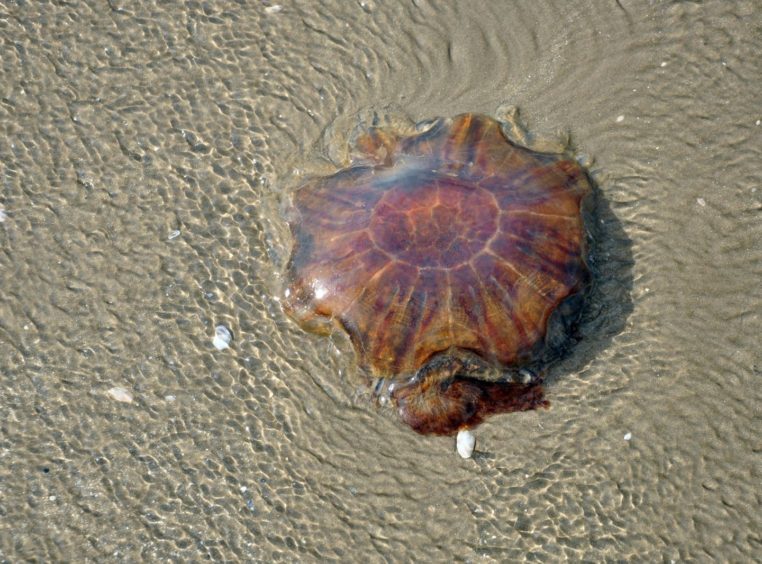Fifers are being warned to look-out for a species of giant stinging jellyfish after a brush from its tentacles left a young boy in agony.
Hamish Roden, 9, was left in intense pain after coming into contact with a lion’s mane jellyfish at Elie at the weekend.
The animals are more common on the west coast but have begun to be seen around Fife in recent years.
Dad Paul, 55, said Hamish and his sister Orla, 11, were paddling on their boogie boards with mum Dawn, 49, at Shell Bay on Saturday when his son “let out an almighty roar and started screaming uncontrollably”.
He said: “My wife got to him and spotted beside him a huge jellyfish about 15 inches wide and brown and pink in colour which we now know to have been a lion’s mane.
“He was screaming for about an hour. There was no consoling him.”
The family, who live in Bathgate and have a caravan in Elie, tried giving Hamish an antihistamine and washing the stings on his legs and arms.
When the youngster was still in pain 40 minutes later, they called 999 and were told to go to the minor injuries clinic in St Andrews.
They then saw a pharmacist who told them they had done the right thing, but it was two full hours before the pain started to subside.
The NHS website advises treating jellyfish stings by rinsing the affected area with seawater and warm water.
Those with severe pain which is not going away are advised to visit a minor injuries unit, and a trip to A&E is needed for extreme reactions, including severe swelling, breathing difficulties and seizures.
Paul said Hamish had fully recovered and his ordeal had not discouraged him from getting back in the water.
James Dawson, head of communities and engagement at Fife Coast and Countryside Trust, said the lion’s mane jellyfish was not aggressive to humans but their tentacles can deliver a painful sting.
He said stings, although painful, are not usually harmful for healthy individuals.
“The lion’s mane jellyfish is one of several types of jellyfish found in UK waters,” said Mr Dawson.
“They are not as commonly seen here as on the west coast of Scotland, but it is normal to see them here during the summer months.
“They use their long tentacles to ensnare small fish, crustaceans and other jellyfish on which they feed.”
According to the marine charity Ocean, scientific research has suggested that jellyfish actually thrive in areas that are affected by human activity.
“Over-fishing, climate change and pollution have helped promote more frequent jellyfish swarms while reducing the jellies’ main predators and competitors and increasing their prey,” it says.
“These factors have created a favourable environment for this species, and few threats are known to the lion’s mane jellyfish or other jellies.”












